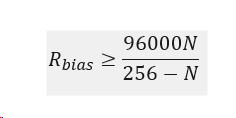Dear All,
I have connected RS485 IC (SN65HVD12) to LPC2387FBD100K microcontroller the attached is image for the references,
The Communication is by using UART.
I am facing the problem of the Multi slave communication, where as I successfully observed 5 slaves are working fine.
More than 5 slave are not working, If I connect 6th slave to device then its not working means still 5 slave working but 6th slave not working.
My aim is to connect more than 10 slave communication.
Please assist, if any other document required please let me know.



